-
Hotels and Teahouses
-
Flight
-
5,643m at Kala Patthar
-
Strenuous
-
Lukla-Lukla
-
5-6 hours per day
-
Autumn and Spring
-
Minimum 2 People
Overview
Everest High Passes Trek, also known as the Everest Circuit Trek, is one of the most comprehensive adventures in the Himalayas of Nepal. On this trek, you will be traversing through the rugged trails of the lower Khumbu region, navigating three high Himalayan passes, and standing at the foothills of the world’s highest massifs.
Often regarded as one of the most demanding teahouse adventures in Nepal, the Everest High Passes Trek requires you to scale three high passes above 5,000 meters, namely Renjo La Pass, Cho La Pass, and Kongma La Pass. Among the three passes, Kongma La Pass marks as the highest and most challenging pass of the trek, at the elevation of 5,535 meters.
This trek integrates local Sherpa cultures, rustic lifestyle, majestic mountains, and high passes in its 20-day run. Along the way, you’ll get to relish some of the highest massifs of the world, including Mt. Everest, Lhotse, Ama Dablam, Thamserku, Cho Oyu, Pumori, Nuptse, and Makalu.
Besides, this trek also takes you to two of the most popular viewpoints in the Himalayas — Gokyo Ri and Kala Patthar. At an altitude of 5,643 meters, Kala Patthar marks as the highest landmark of the Everest High Pass Trek. From the top of this viewpoint, you’ll get to marvel at the 360-degree panorama of the mountains, including Mt. Everest, Pumori, Lingtren, Nuptse, and Changtse.
Kala Patthar is also considered as one of the best places to witness the most epic sunrise and sunset. Similarly, Gokyo Ri offers a distant view of four 8,000-meter peaks — Mt. Everest, Lhotse, Cho Oyu, and Makalu.
Likewise, other major highlights of the Everest High Pass Trek includes the exploration of Gokyo Lakes, Ngozumpa Glacier, Namche Bazaar, Khumjung Monastery, Everest View Hotel, Tengboche Monastery, and Everest Base Camp.
Your journey to Everest High Passes Trek gets off the ground with one of the most exhilarating flights from Kathmandu to Lukla. You’ll be trudging through several Sherpa settlements and navigating several high passes before reaching the Everest Base Camp, the base of the world’s highest mountain. The entire trail is decorated with picturesque landscapes, prosperous villages, colorful prayer flags, chortens, mani walls, and ancient monasteries.
Our 20-day Everest High Pass Trek is an excellent choice for experienced trekkers who are willing to take the challenge of high altitude and uneven trails. This Everest High Passes Trek itinerary is considerately designed with proper acclimatization days to ensure once in a lifetime experience.
Why You’ll Love This Trek!
- Cross over three Himalayan passes of the Everest region — namely, Renjo La Pass Cho La Pass, and Kongma La Pass
- Fly over the mountains to the world’s most extreme airstrip at Lukla
- Marvel at the tranquil lakes of Gokyo from their shore
- Hike up to the two famous viewpoint of the Everest region — Gokyo Ri and Kala Patthar
- Explore the base of Mt. Everest, the world’s highest mountain
- Enjoy the panoramic spectacle of Mt. Everest, Ama Dablam, Nuptse, Pumori, Lhotse, Cho Oyu, Thamserku, and Makalu.
- Visit the ancient Buddhist monastery of the Khumbu region at Khumjung and Tengboche.
- Witness the unique Sherpa culture and their lifestyle while experiencing their famed hospitality
- Relish the spectacular view of Khumbu Icefall and Khumbu Glacier from Everest Base Camp
Is Everest High Passes Trek Right For You?
- Keep in mind that Everest High Passes Trek is not a luxurious holiday package. On this trek, you will make your way across three high passes over 5,000 meters. In addition to that, you’ll be reaching the maximum elevation point of 5,643 meters. So, this trek demands both physical fitness as well as mental preparedness. Therefore, this trek is ideal for avid trekkers who have prior trekking experience in the Himalayas. If you’re trekking to the Himalayas for the first time, we recommend you go for relatively less challenging treks in Everest or Annapurna region.
- In the 20-days Everest High Passes Trek, you’ll be walking in the Himalayas for 17 long days. On average, you will have to walk five to six hours every single day on this trek. If you think you have the endurance to take on this challenge, we’re pretty confident that you’ll be able to pull this through.
However, before you pack your bags and head to the Himalayas, we recommend you to train and prepare well for the trek. We advise you to engage in cardio-related activities and go for short hikes around your city. - On this trek, you will be gaining approximately 300 to 700 meters elevation every single day. You’ll be walking from 2,840 meters at Lukla, all the way to 5,643 meters at Kala Patthar. Therefore, the threat of high altitude sickness is significant on this trek. Make sure your body and mind can handle the altitude gain. If you do not have prior trekking experience, go for a less strenuous lower altitude trek before taking on this challenge.
- As we mentioned, Everest High Passes Trek is not a luxurious holiday package. The 17 days that you’re going to spend in the mountains are not likely to be as comfortable as your days in the city. During the trek, you will be staying overnights at the local teahouse that only provide basic amenities.
The teahouse usually offers cozy twin-shared rooms, warm blankets, delicious food, WiFi, charging facilities, and hot showers. So, if you’re one of those travelers who can manage with the basic services, this trek is an excellent choice for you. - Do not forget, the weather in the Himalayas are often unpredictable, especially in the upper reaches of the trek. In the higher altitude of the Everest High Passes Trek, you may potentially have to bear extreme cold weather, rainfalls, and even snowy conditions in the worse case. Make sure you are able to cope with such unforeseeable circumstances. In addition to that, we also advise you to pack enough layers and weather protection to tackle such situations, even if you’re trekking during the summer.
Required Permit for Everest High Passes Trek
Like any other trekking destination of Nepal, you’ll also require trekking permits to access this trekking region. To set out on the adventure of Everest High Passes Trek, you’ll need to acquire two different permits — Khumbu Pasang Lhamu Rural Municipality Entrance Permit and Sagarmatha National Park Entry Permit. Both of these permits will be included in your trip package.
Khumbu Pasang Lhamu Rural Municipality Entrance Permit
Where to obtain: Lukla and National Park Entrance Gate in Monjo
How much does it cost: NPR 2,000 per person
Sagarmatha National Park Entry Permit
Where to obtain: Nepal Tourism Board in Kathmandu and National Park Entrance Gate in Monjo
How much does it cost: NPR 3,000 per person
20 Days Everest High Passes Trek Itinerary
| Day | Description | Altitude (Meters) | Trekking Duration |
|---|---|---|---|
| 1 | Arrival in Kathmandu. Meet at Airport and Transfer to Hotel | 1,350 | N/A |
| 2 | Trek Preparation and Full Day Sightseeing Around Kathmandu | 1,350 | N/A |
| 3 | Morning Flight to Lukla (2,840m) and Trek to Phakding | 2,610 | 4 hours |
| 4 | Trek from Phakding to Namche Bazaar | 3,440 | 6 hours |
| 5 | Acclimatization Day at Namche Bazaar. Hike to Khumjung Village (3,790m) | 3,440 | 4 hours |
| 6 | Trek from Namche Bazaar to Thame | 3,820 | 4 hours |
| 7 | Trek from Thame to Lungden | 4,375 | 6 hours |
| 8 | Trek from Lungden to Gokyo Valley via Renjo La Pass (5,360m) | 4,790 | 7 hours |
| 9 | Trek to Fifth Lake (4,956m) and Return to Gokyo Valley | 4,790 | 5 hours |
| 10 | Morning Hike to Gokyo Ri (5,360m) and Trek to Dragnag | 4,700 | 7 hours |
| 11 | Trek from Dragnag to Dzongla via Cho La Pass (5,420m) | 4,830 | 6 hours |
| 12 | Trek from Dzongla to Lobuche | 4,910 | 5 hours |
| 13 | Trek from Lobuche to Gorak Shep and Excursion to Everest Base Camp (5,364m) | 5,140 | 7 hours |
| 14 | Morning Hike to Kala Patthar (5,643m) and Trek to Lobuche | 4,910 | 5 hours |
| 15 | Trek from Lobuche to Dingboche via Kongma La Pass (5,535m) | 4,410 | 8 hours |
| 16 | Trek from Dingboche to Tengboche | 3,860 | 5 hours |
| 17 | Trek from Tengboche to Jorsalle | 2,740 | 6 hours |
| 18 | Trek from Jorsalle to Lukla | 2,840 | 6 hours |
| 19 | Fly from Lukla to Kathmandu | 1,350 | 40 mins |
| 20 | International Departure | N/A | N/A |
Important Notes:
- We advise you to carry adequate cash for your personal expenses in the Everest High Passes Trek. You can find plenty of ATM lounges in Kathmandu and Namche Bazaar. But beyond that, you are not likely to find any ATM service during the trek. It is best to dispense as much cash as necessary for the trek in Kathmandu itself.
Although there are ATM and credit card services in Namche Bazaar, it may not always be reliable. Also, if you have foreign currency, we advise you to exchange them in local cash as most teahouses in the upper reaches of Everest do not accept foreign currency.
- Depending on the circumstances, your trekking guide is liable to delay or alter the standard itinerary of the Everest High Passes Trek. If the guide notices any problem in your health condition, he is likely to make the necessary delays and changes on the itinerary to help you achieve success on the trek.
- While packing your bag, we also advise you to carry a copy of your passport along with a few passport size photographs. You may require these documents while acquiring the trekking permits at Lukla and Monjo.
- Remember, not every teahouse in the Everest region has access to hydroelectricity. Most teahouses in the upper reaches of Everest High Pass Trek are powered by solar energy. In these regions, electricity may not be reliable all the time. Therefore, we suggest you carry a portable charger to charge your electronic devices in case the power supply is not sufficient.
- Note that the charging sockets in all the tea houses may not exactly match with your charger. In such a case, you may have to bear the consequences by not being able to charge your mobile phone or camera. Therefore, to avoid such unfortunate situations, always carry a universal travel adapter to charge your cell phone or camera.
- Everest High Pass Trek is one of the most challenging trekking destinations in the Himalayas of Nepal. This trek requires both physical as well as mental preparedness to complete the trek successfully. In order to stay fit for the trek, we highly advise you to engage in cardio-oriented exercises, such as swimming, hiking, running, biking, and jogging.

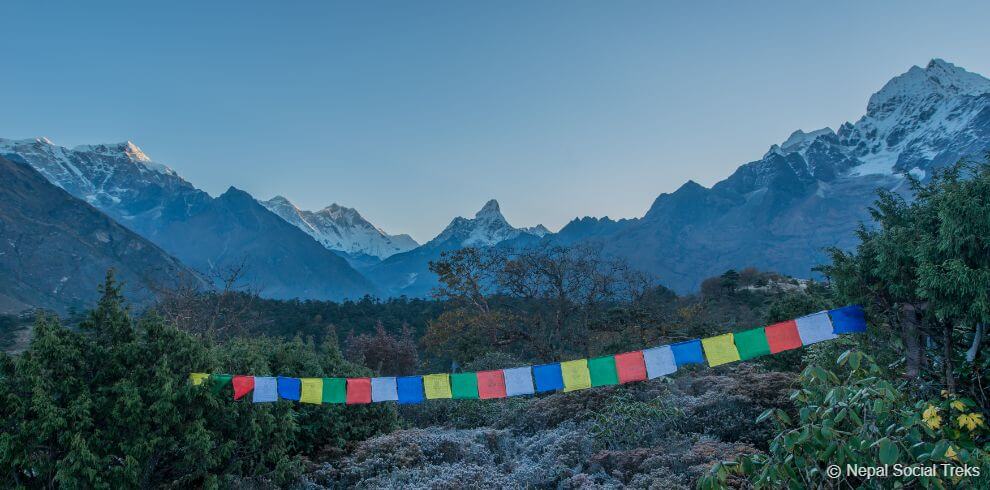
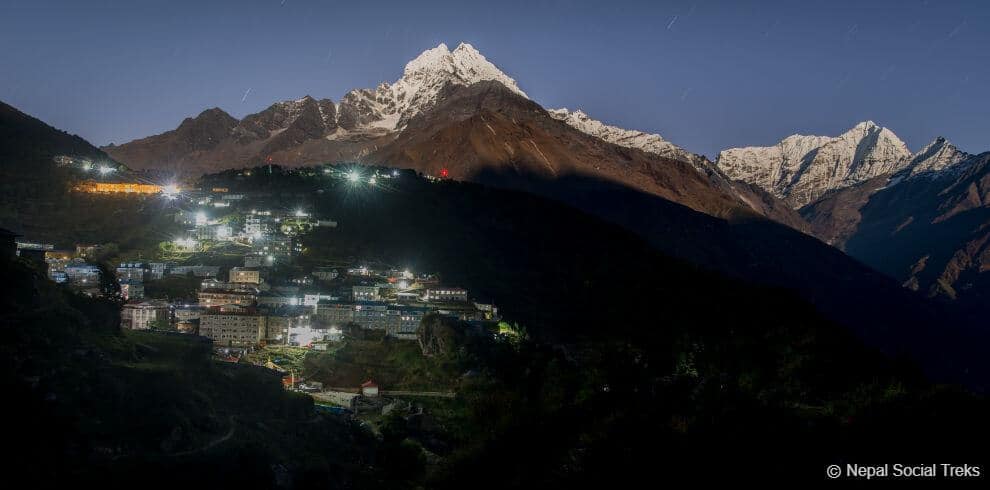
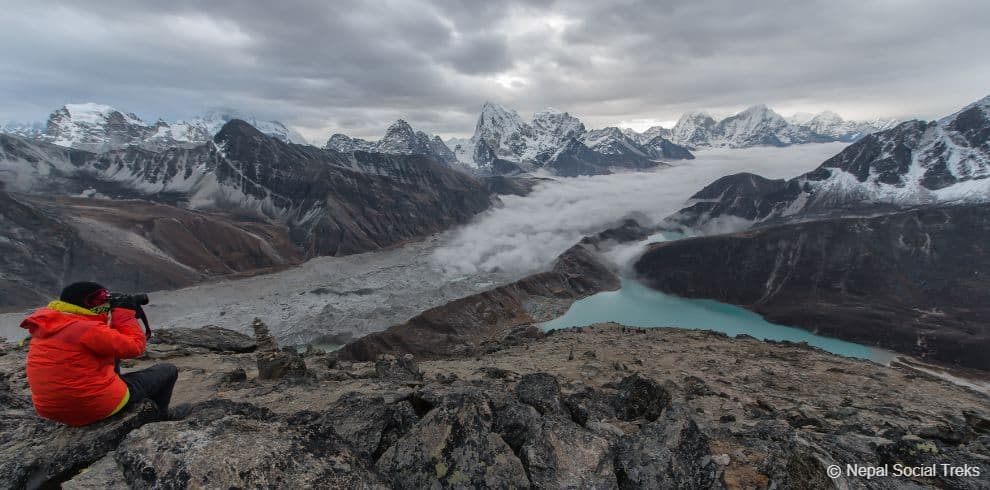
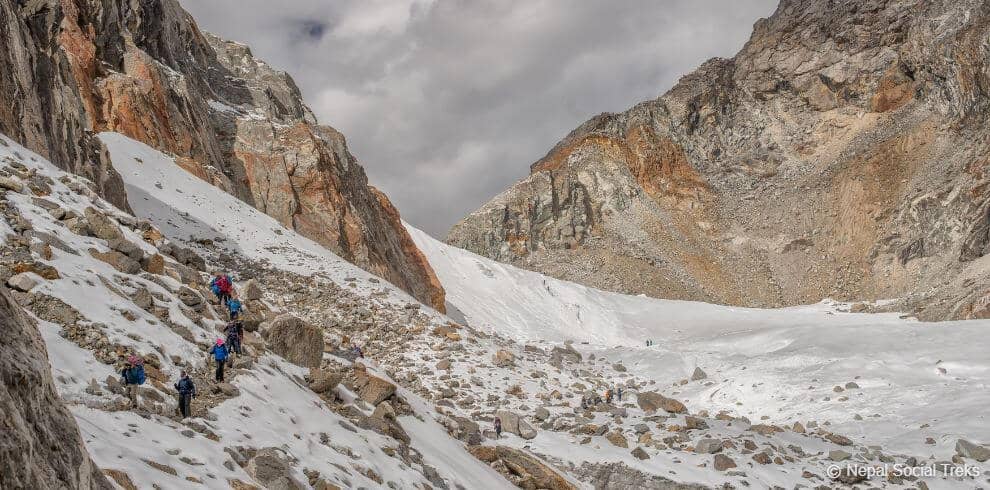
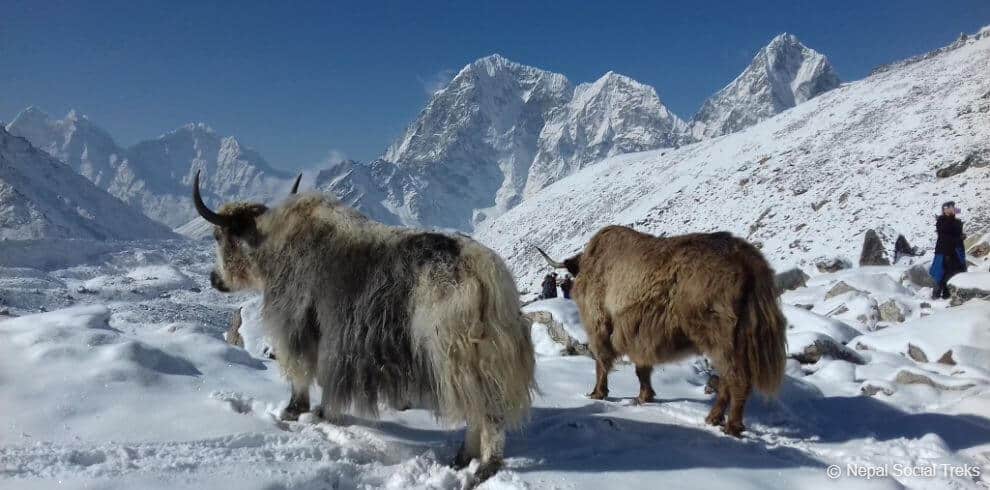
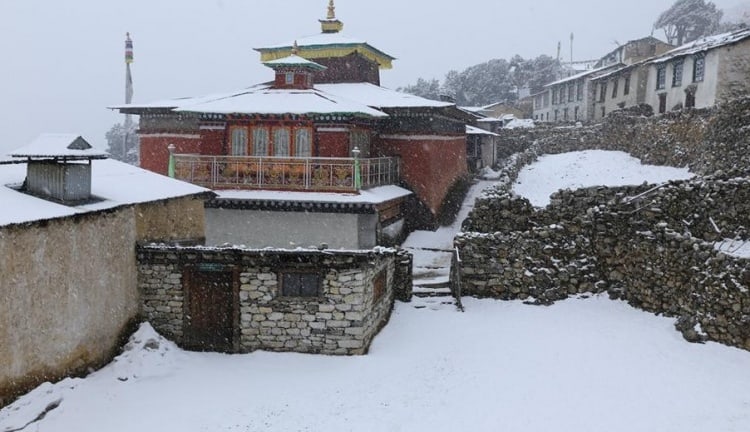
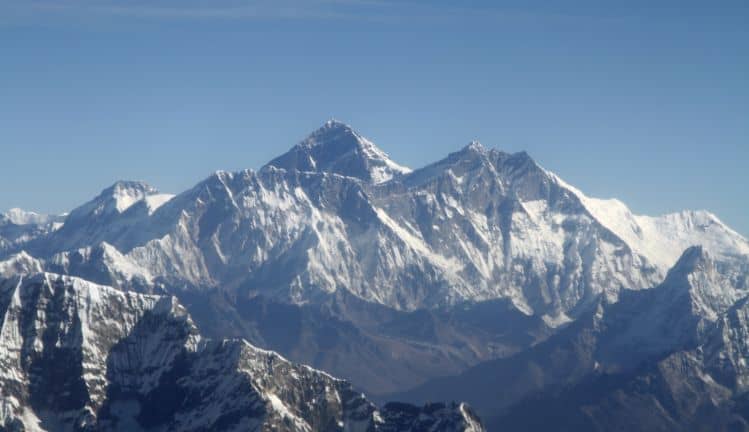
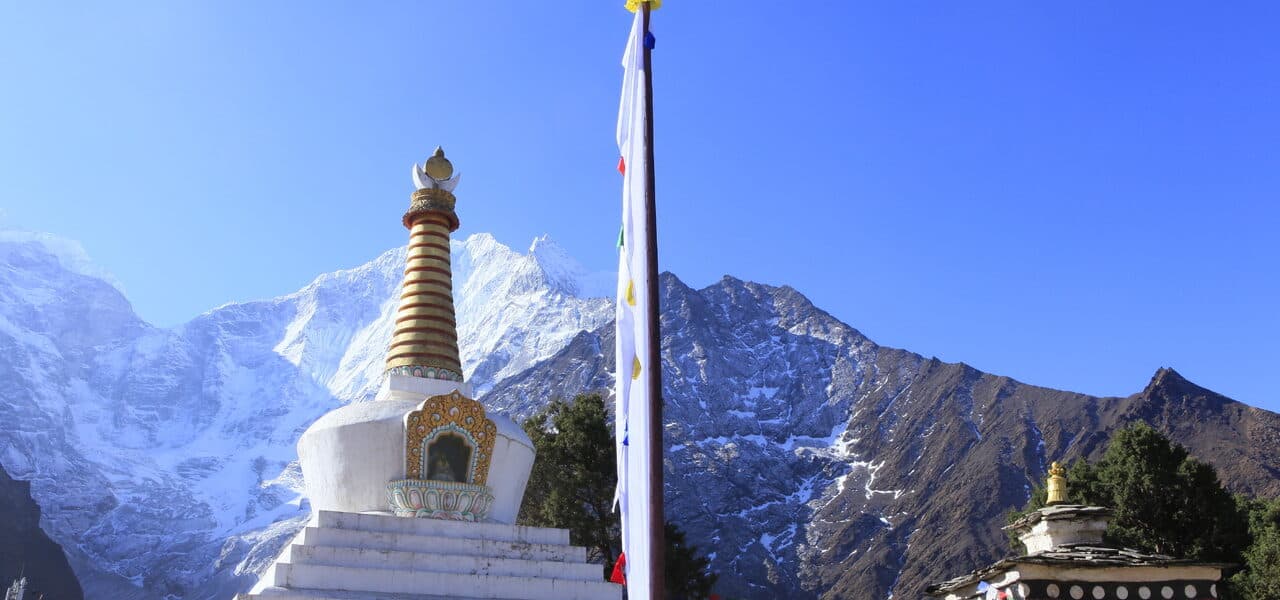


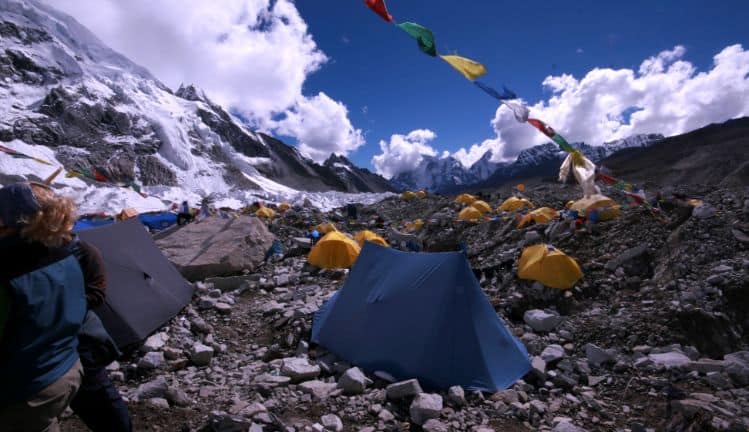
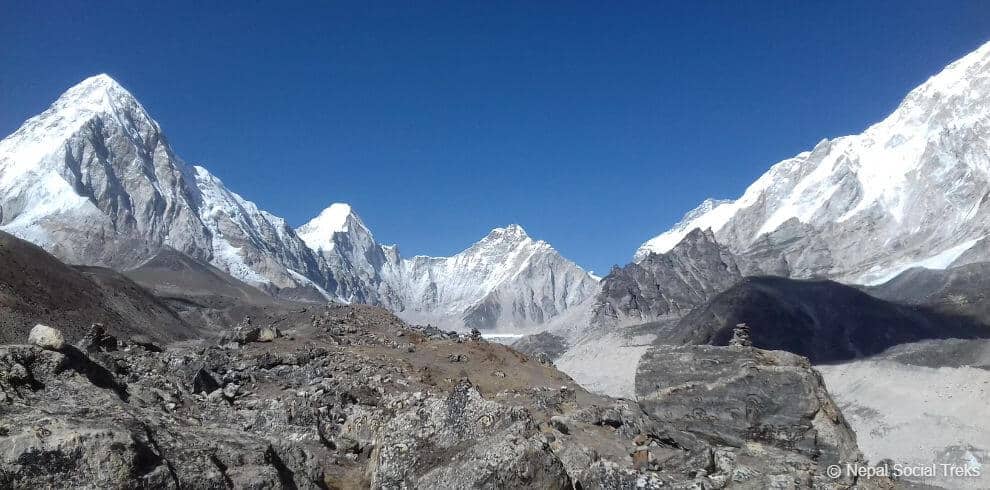
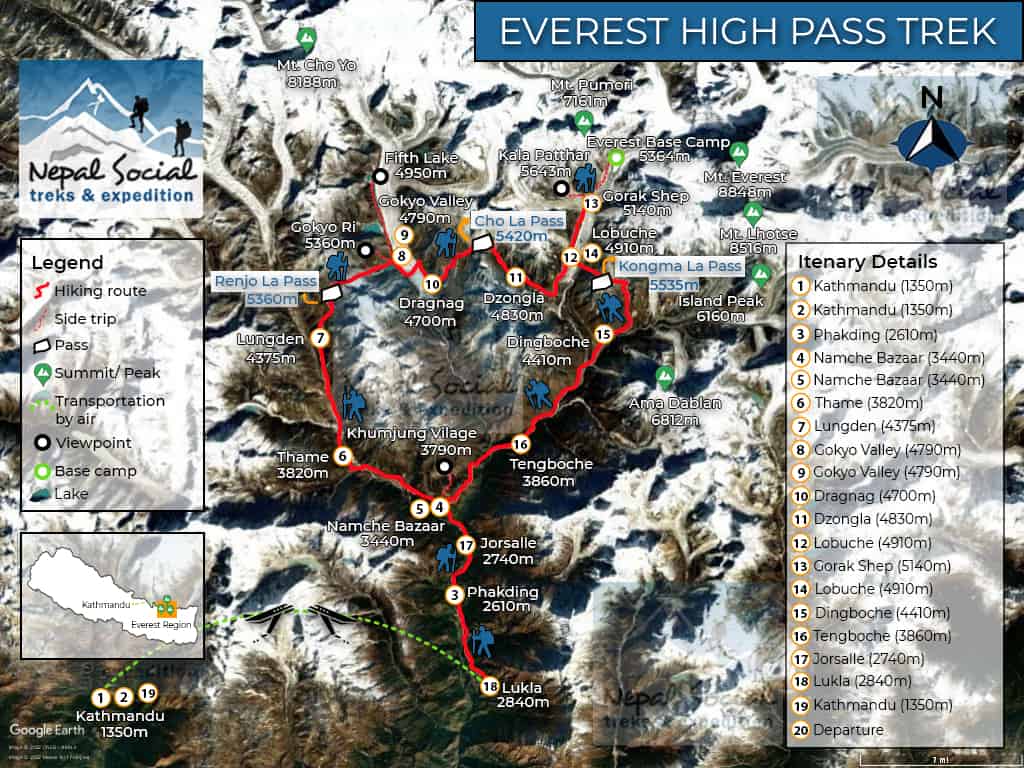
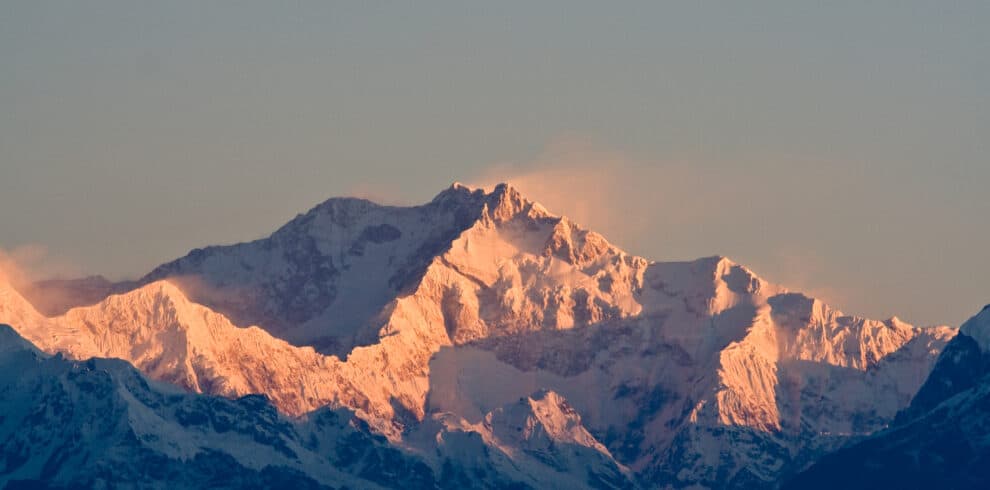
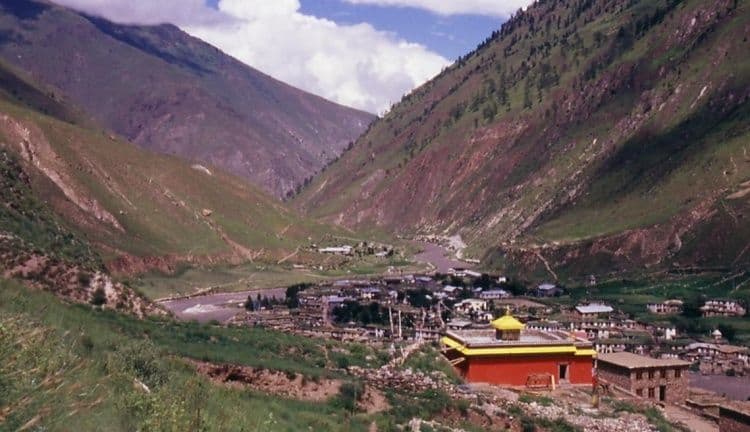
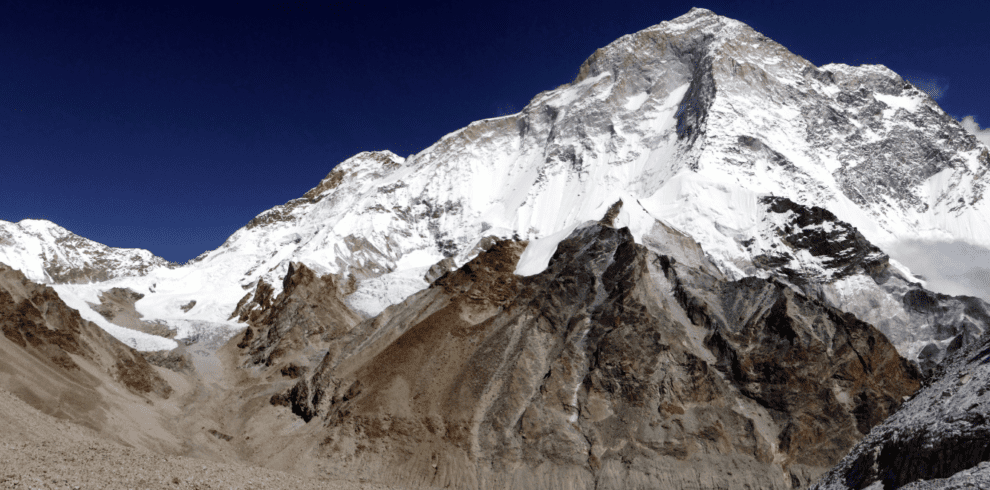
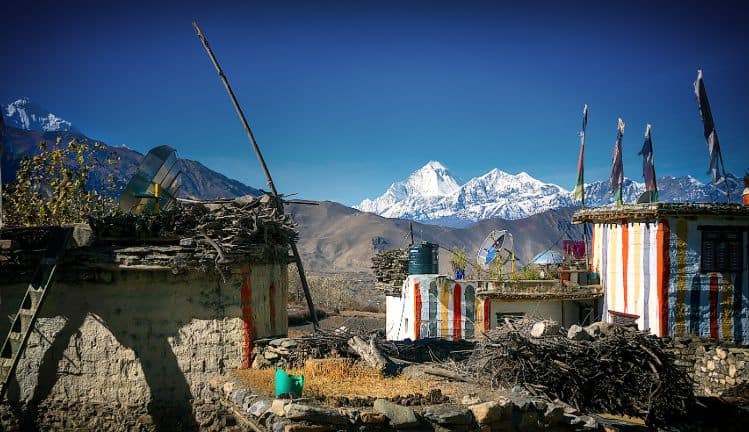

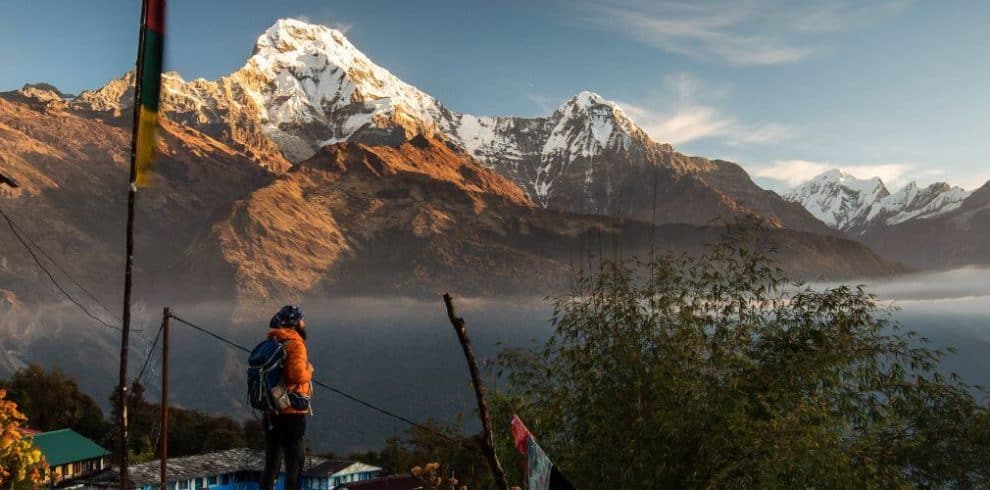
Write a Review